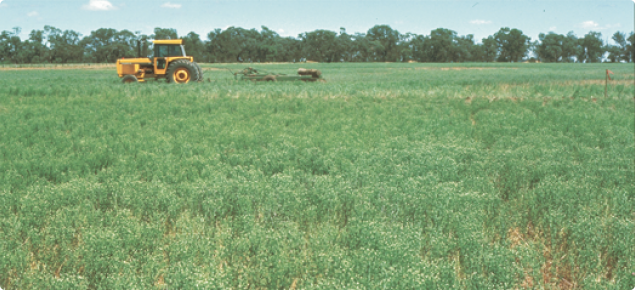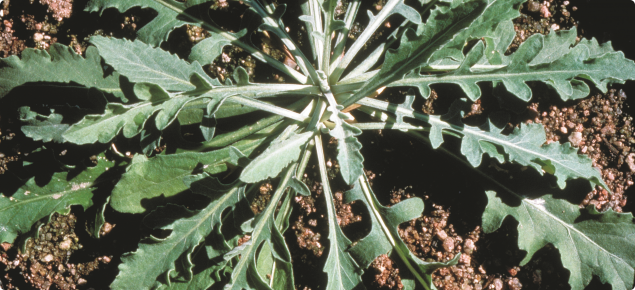What you should know about creeping knapweed
Creeping knapweed (Rhaponticum repens, formerly Acroptilon repens) is in the daisy family, Asteraceae. This family includes many weeds, such as thistles and skeleton weed, as well as useful plants, such as lettuce and sunflowers. Creeping knapweed is also known as hardheads, hardhead thistle, blue weed and Russian knapweed.
It originated in southern Russia, Mongolia and the Middle East and probably spread from there as an impurity in lucerne seed. It is a major problem weed in the Murray River irrigation area and the Victorian Mallee and is also found in South Australia and Queensland. It is a serious weed in New Zealand, Canada, California and South Africa.
It has been found once in Western Australia, near Ravensthorpe. It could flourish here if allowed to establish and is a declared plant for the whole of Western Australia (WA). Any plants found would be a target for eradication and should be reported to Department of Agriculture and Food, Western Australia (DAFWA).
Why creeping knapweed matters
Creeping knapweed forms dense patches that shade out crops and pastures. Its perennial root system makes it difficult to control in crops. It can reduce dryland grain yields by up to 75% and its seed imparts a bitter flavour to contaminated flour. It is also a major weed of vineyards and orchards and can infest other horticultural crops. Seeds can spread as a contaminant in pasture seeds.
The plant may be poisonous to sheep if eaten in large amounts and has little feed value. Unlike most poisonous plants, creeping knapweed is freely grazed. Creeping knapweed contains an unidentified neurotoxin that affects horses only, causing a specific type of brain damage and accompanying characteristic nervous signs. One of these is repeated chewing-like jaw movements, leading to the name “chewing disease” being ascribed to affected horses.
What you should look for
The flowers are usually purple but sometimes pink or white. They are about 2.5cm in diameter and form singly at the ends of branches. The seeds are wedge-shaped and about 5mm long. They are smooth and greyish-white in colour with an attachment of short, stiff hairs. Unlike most plants, the seeds remain in the head at maturity and are not shed. Creeping knapweed resembles a spine-free thistle. It has erect branched stems up to one metre tall that are dark brown to black near the base. Both stems and leaves are slightly woolly in appearance. The leaves are grey-green, narrow and up to 7.5cm long with irregular lobes. The lobes are more pronounced in the lower leaves.
The roots form a dense network with many buds from which new shoots arise.
Creeping knapweed is a perennial plant. It appears to prefer clay or clay-loam soils but can grow on most soil types. It reproduces from seeds that may be spread by water. They remain viable even after soaking for several months.
The seeds have stiff, hooked hairs that help them stick to fur and fibres such as clothes, animals and sacking. They can remain viable for eight years. Creeping knapweed seedlings do not easily become established but, once a taproot has formed, it may extend down to four or five metres within two years. The roots may persist for many years and can ultimately get down to about 20m.
The weed’s most important means of spreading is its extensive, creeping root system. It can regenerate new plants from root sections broken off and transported by farm equipment and roadmaking machinery.
The plant is dormant during winter, growing in spring and flowering in summer. Flowering does not normally occur until the second summer. The aboveground parts of the plant die off after flowering.
Online weed identification training
Login or set up a new account on DAFWAs online training site to access:
- a training course on how to identify creeping knapweed and report it.
- training material that you can use to teach community groups how to identify creeping knapweed.
What you can do about it
Practice good biosecurity and keep creeping knapweed out of WA. Be vigilant: learn to identify the weeds on and around your property and report suspect creeping knapweed or any other unusual weeds to DAFWA. Samples for identification can be submitted to your local department office or posted to AGWEST Plant Laboratories.
Further information
For further information search this website or contact the Pest and Disease Information Service.




